Hello, friends! I’m Ranjan Bhattacharya, and I’m so thrilled you’ve stopped by my blog. I’ve been clicking wedding photos for over 24 years now, travelling all over India to capture the most beautiful love stories, and let me tell you—it’s been a ride full of joy. One thing I’ve learnt in all these years is that picking the right photography style can totally change how you’ll look back on your wedding day. So, I thought I’d put together this Ultimate Guide to Wedding Photography Styles: Find Your Perfect Match to help you figure out what’s best for you, and hopefully bring some new friends to my wedding photography.
Indian weddings are just something else, aren’t they? The colours, the emotions, the traditions—from the fun of the sangeet to the tears during the vidaai, every moment is so special. The style you choose for your photos can make those memories even more magical, in a way that feels like you. I’ve seen that “wedding photography styles” is getting a lot of buzz lately—searches have shot up by 900% in the past few months! So, I know this is something you’re thinking about. In this guide, I’ll share the styles I’ve worked with over the years, sprinkle in some stories from my own shoots, and help you find the one that’s perfect for your big day. Let’s get started, shall we?
Why the Style You Pick Is a Big Deal
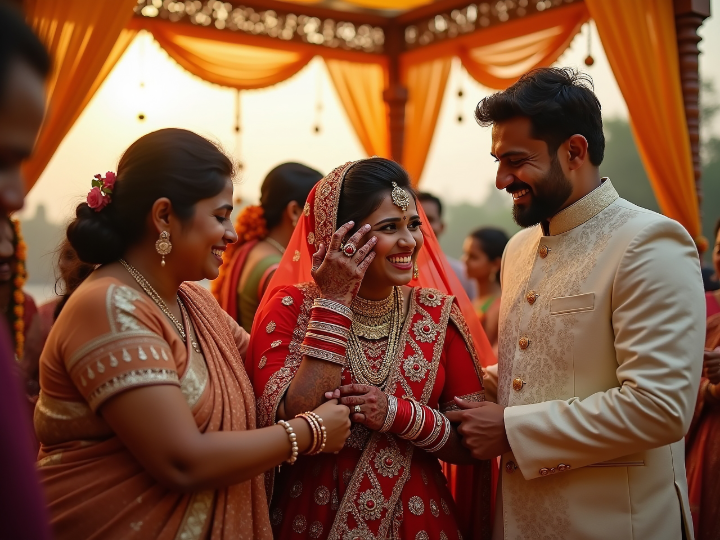
Your wedding photos aren’t just snapshots—they’re the memories you’ll pull out years later to relive the day. The style you go for sets the whole vibe of your album. Do you want those classic, posed shots that’ll never go out of style, or maybe something more natural, like the laughter and tears of the moment? In Indian weddings, where every ritual means so much, the right style can really bring out the beauty—like the glow on the bride’s face during the kanyadaan or the groom’s grin as he leads the baraat. I’ve seen how the right style can make an album feel like a treasure, and I’m here to help you find yours.
1. Traditional Photography: Old-School Charm
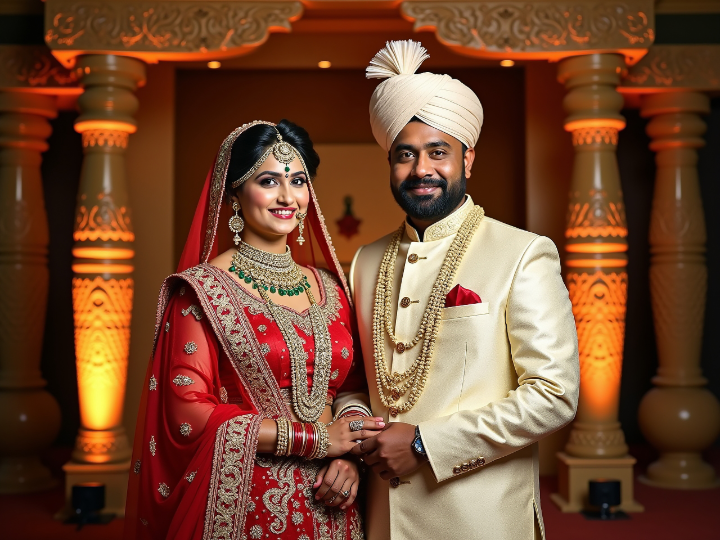
Let’s kick things off with a style that’s been around forever—traditional photography. This is all about those classic, posed pictures that you’ll see in every family album. Think of the big group photo after the pheras, with everyone smiling at the camera, or the bride and groom standing side by side in their gorgeous outfits. I remember this one wedding in Kolkata—I must’ve spent 20 minutes just trying to get the whole extended family in the frame! But when I showed them the photo, the grandmother teared up, saying it reminded her of her own wedding day.
In Indian weddings, traditional photography is perfect for those must-have moments—like the vidaai or the couple’s first official portrait as husband and wife. I love using this style to show off the little details, like the embroidery on a bride’s lehenga or the shine of the groom’s sherwani. I usually shoot these in a well-lit mandap so the colors really pop. If you’re the kind of couple who loves those timeless, polished shots, this style might be your pick.
Who It’s For: Couples who want a classic, formal album with all the iconic moments.
2. Candid Photography: The Real, Unfiltered You

Now, candid photography—this one’s a big hit in India these days, and I totally get why. It’s all about capturing those real, unscripted moments that just happen. Picture the bride laughing with her cousins during the mehendi or the groom sneaking a shy glance at his bride during the jaimala. Since I’m all about capturing emotions, this style feels like home to me.
I’ll never forget this wedding in Delhi a few years back. The bride’s little brother surprised her with a dance at the sangeet, and I caught her mid-laugh, her eyes sparkling with joy. She later told me it was her favourite photo from the whole wedding! In Indian weddings, candid shots are amazing for events like the haldi or reception, where everyone’s just having a blast. If you want an album that feels real and full of life, candid is the way to go.
Who It’s For: Couples who love natural, unposed photos that capture the moment.
3. Documentary Photography: Your Whole Wedding Story
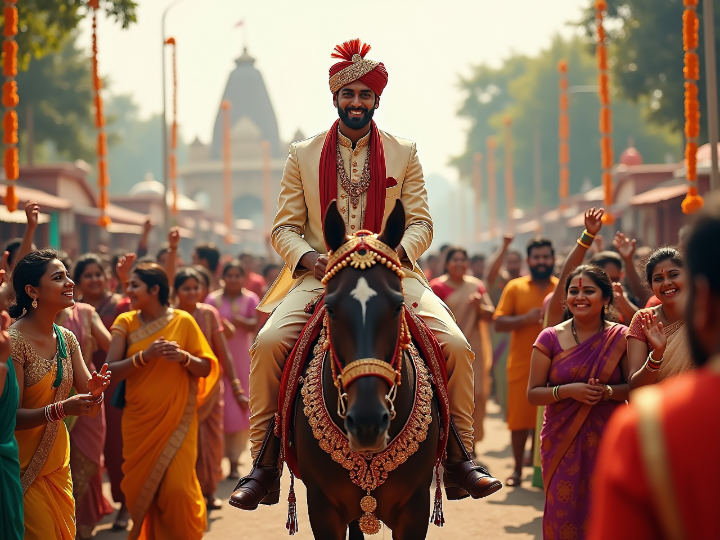
Documentary photography—sometimes called photojournalistic'—is a bit like candid, but it’s more about telling the full story of your day. I’m talking about capturing everything, from the bride putting on her jewellery to the last guest leaving the reception. I don’t step in or direct—I just let the day happen and keep my camera ready, creating a kind of visual diary of your wedding.
I used this style at a three-day Punjabi wedding in Amritsar once, and the couple couldn’t stop raving about how their album felt like a movie. I got shots of the groom’s baraat arriving, the bride’s emotional moment during the kanyadaan, and even the kids running around during the sangeet. For Indian weddings, especially the multi-day ones, this style is perfect for capturing every little detail.
Who It’s For: Couples who want a complete, storytelling album of their whole wedding.
4. Fine Art Photography: Straight Out of a Dream
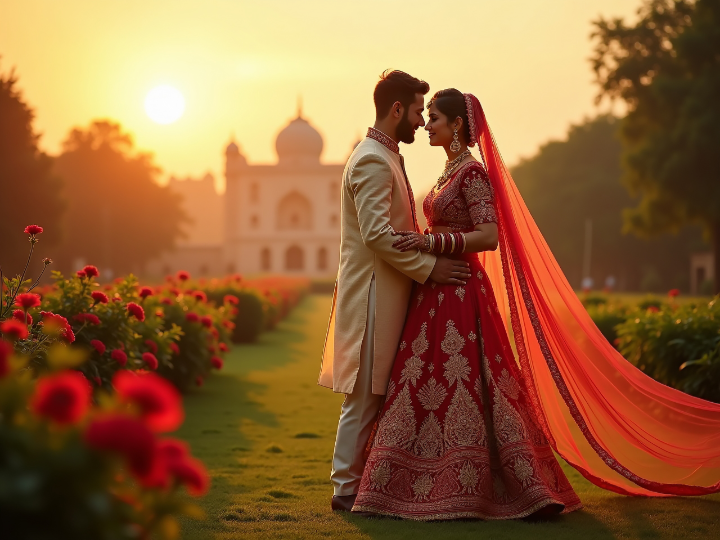
Fine art photography is for the romantics—it’s all about creating photos that look like they could be in an art gallery. This style uses soft, dreamy light, creative angles, and a big focus on beauty. I often use this for pre-wedding shoots, where I can play with natural light and pretty locations, like a beach or a forest.
I did a fine art shoot for a couple in Goa a while back, and we got this one shot of the bride with her dupatta flowing in the breeze against a sunset—it looked like something out of a painting! In Indian weddings, this style can make shots of the bride in her lehenga or the couple’s first look feel so magical. I like to blur the background a bit to keep the focus on the couple, making every photo feel like a dream.
Who It’s For: Couples who love artistic, romantic photos that feel ethereal.
5. Drone Photography: A Whole New Angle
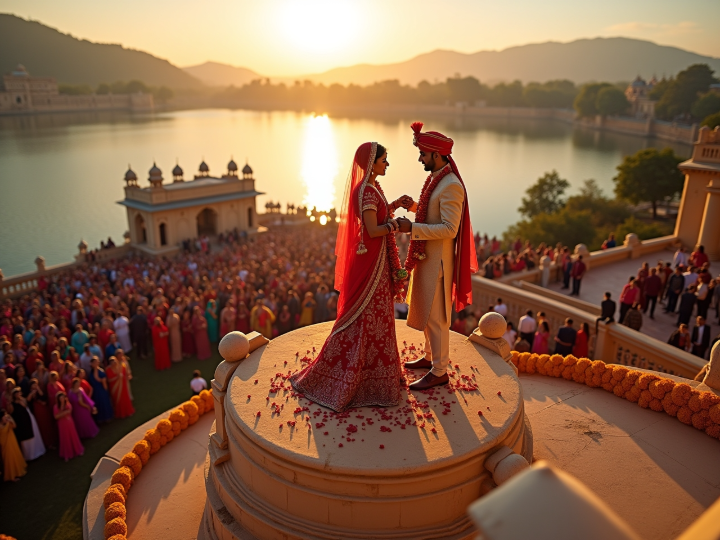
Drone photography has been such a game-changer, and I’ve loved using it to capture weddings in a way you’d never expect. It’s all about those big aerial shots—like the entire wedding party at the venue or the baraat procession as the groom arrives on horseback. I used a drone at a wedding in Udaipur, and the shot of the couple on the palace rooftop with the lake sparkling in the background was just stunning.
This style is perfect for outdoor Indian weddings, especially at big venues or destination spots like Rajasthan or Kerala. It’s also great for group shots, giving you a fresh perspective that adds a modern touch to your album.
Who It’s For: Couples with large, outdoor weddings who want dramatic, wide-angle shots.
6. Black and White Photography: Timeless and Heartfelt
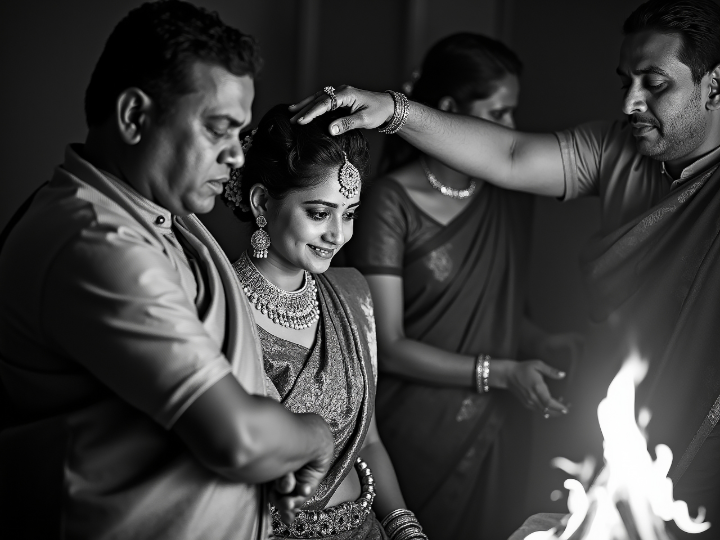
Black and white photography is a classic that always pulls at the heartstrings. By taking away the colour, it puts all the focus on the emotions and details in the photo. I often use this style for those really emotional moments, like the bride’s tears during the vidaai or the couple’s first look as husband and wife.
I shot a Tamil wedding in Chennai a few years ago, and I took a black-and-white photo of the bride’s parents blessing her—it was so powerful without the distraction of colour. In Indian weddings, this style can highlight things like the shine of the bride’s jewellery or the expressions during the pheras, adding a timeless, nostalgic feel to your album.
Who It’s For: Couples who love a classic, emotional vibe with a bit of nostalgia.
How to Choose the Style That Feels Right
So, how do you pick the perfect style? Here’s what I always tell my couples:
- Think about what you’re like as a couple—are you more traditional, or do you love spontaneous moments?
- Look at your wedding—a big Punjabi wedding might look amazing with drone shots, while a smaller Bengali wedding might be perfect for documentary style.
- You don’t have to choose just one! I often mix styles—like candid with traditional and a bit of fine art—to make a well-rounded album.
- Let’s talk about what you’re dreaming of—I’m here to help you find the style that feels like you.
Why I’d Love to Capture Your Big Day
At Ranjan Bhattacharya Photography, I’m all about capturing the joy, emotions, and little details that make your wedding so special. With 24 years of experience, I can work with any style you love, making sure your album is exactly what you imagined. Whether you’re into candid shots or fine art portraits, I’d be so honoured to tell your love story through my camera.
Let’s Make Your Wedding Album Amazing
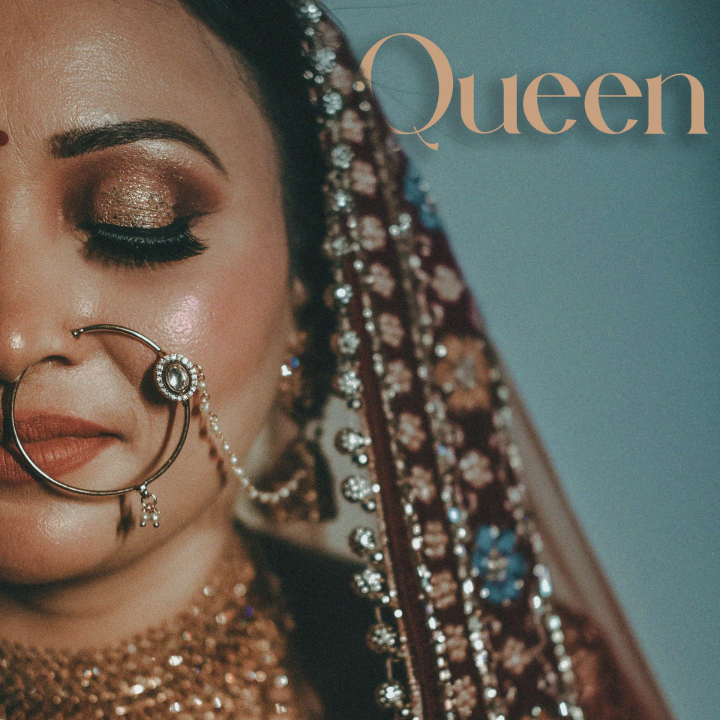
I'm so glad you took the time to read this guide! I hope it has inspired you to envision the perfect wedding photography style for your big day. If you're ready to bring those ideas to life, don't miss the chance to visit our wedding photography showcase. Let's discuss how I can help create stunning memories that you'll cherish forever. I can't wait to be a part of your extraordinary celebration!
The Ultimate Guide to Wedding Photography Styles: Find Your Perfect Match